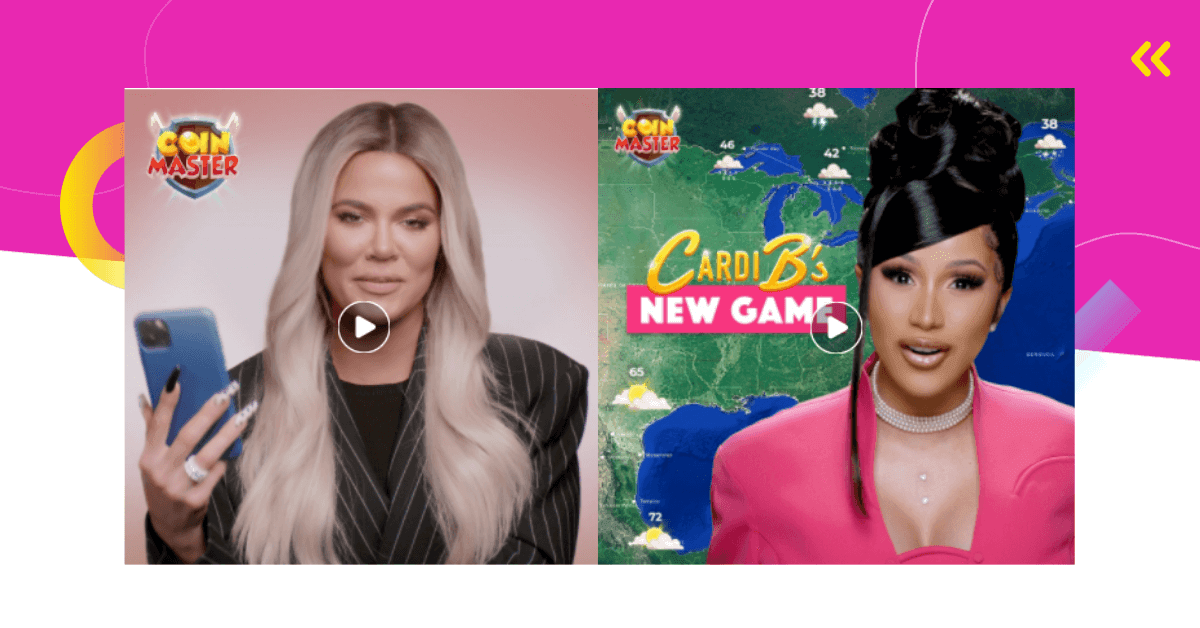Marketing to gamers isn’t about shouting louder. It’s about understanding who they are, where they spend time, and what makes them click. With billions of gamers worldwide, you can’t treat them as one audience. You need to speak their language, show up in the right places, and create content that feels natural in their world. These tips will help you do exactly that.
1. Set a Clear Goal
Before you spend a dollar on ads or post a single video, decide what you want to achieve.
Common goals include increasing downloads, improving retention, driving in-app purchases, or growing your game’s community.
If your goal is installs, focus on direct-response ads.
Show short gameplay clips that instantly hook attention, highlight the fun or unique mechanic, and end with a clear call to action like “Play Free” or “Download Now.” Keep the message simple so people understand what the game is and why they should try it in just a few seconds.
If you want to achieve better retention, shift your strategy. Retarget players who installed but stopped playing. Use ads or notifications to remind them of new levels, events, or rewards waiting in-game. You can also run engagement campaigns on social media to bring attention back to updates or community moments.
If your goal is monetization, focus on the value of in-game purchases. Show how premium items, skins, or passes enhance the gameplay experience. Avoid hard selling. Instead, highlight progression, exclusivity, or limited-time benefits that feel rewarding to regular players.
For community growth, use organic content to bring people together. Post updates, behind-the-scenes videos, or memes on channels where your audience already hangs out. Encourage discussion and make your community feel part of the game’s journey.
When you know your goal, every creative and budget choice becomes easier. You’ll pick the right message, tone, and format instead of running campaigns that try to do everything at once.

2. Position Your Game Before You Promote It
Before you start planning ads or defining your audience, make sure you understand what makes your game stand out.
Ask yourself a few questions. What genre does it belong to? What makes it different from others in the same space? Which parts of the game are the most marketable features, like the art style, gameplay mechanic, or story hook that grabs attention?
Maybe your merge game has a story twist. Maybe your puzzle game rewards creativity instead of speed. Or maybe your RPG focuses on deep character collection and customization. Once you know that, decide how you want people to feel when they play it. Is it relaxing, competitive, emotional, or funny?
This positioning becomes your foundation. It guides how you talk about the game, what visuals you use, and where you promote it.
For example, a calming idle game might perform best on TikTok with satisfying, looped gameplay clips. A high-intensity PvP game could focus on action-driven moments and player skill on YouTube or Reddit.
If you can describe your game in one short, clear sentence and explain why it’s different, you’re ready to build a marketing strategy that actually connects.
3. Know Your Gamers
There are over 3.3 billion gamers worldwide (Newzoo, 2024) — nearly half of the global population. But they’re not one group with the same interests or habits.
About 80% of gamers are adults, or 2.47 billion people (Statista, 2025). The biggest segment is 18–34 years old, representing 38% of all gamers, or over 1.1 billion people. Still, gaming spans all ages: 14% are 35–44, 12% are 45–54, 9% are 55–64, and 7% are over 65 (Statista, 2025). Women now make up almost half of all gamers, proving how broad and balanced this audience has become.
That diversity is why audience definition matters. A teen scrolling TikTok isn’t the same as a parent playing puzzle games at night or a 40-year-old deep into strategy titles. Each group responds to different visuals, tones, and motivations.
Always identify who your game fits best. What’s their mindset when playing? Are they looking for quick fun, mastery, competition, or connection?
For example, if you’re targeting casual female players in their late 20s or 30s, define them by their habits. They play short mobile sessions during breaks, prefer light and relaxing gameplay, and often find new games through social media. Your ads should feature simple, satisfying mechanics like matching or decorating, cheerful music, and friendly messaging that feels calm rather than competitive.
That’s how effective audience definition works. You pinpoint a player type, understand what motivates them, and design your marketing around that insight. When your mobile game ads match their mindset, they connect instantly.
4. Show Up Where Gamers Hang Out
Once you know who your gamers are, the next step is finding where they spend time online. The platforms you choose should match the habits of your audience, not just what’s popular in gaming circles.
Hardcore gamers often hang out on Twitch, Discord, and Reddit. They join servers, watch streamers, and follow long discussions about strategy, balance, or updates. But that doesn’t mean those same spaces will work for every game.
Casual and mobile players live on traditional social media platforms. TikTok, Instagram, Facebook, and YouTube Shorts are where they discover new games through short videos, memes, or quick reviews. They’re less likely to search for gameplay streams or developer updates, but they respond to content that’s quick, entertaining, and visually clear.
This is why understanding your audience matters so much. If you’re promoting a cozy merge or puzzle game, posting on Discord won’t move the needle. But a short, satisfying gameplay clip on TikTok or an interactive story ad on Instagram might perform incredibly well.
You don’t need to be everywhere. Focus on the platforms that actually reach your target players. Meet them in their natural environment, speak their language, and create content that fits how they already interact online. That’s how your marketing feels natural instead of forced.
5. Combine Paid and Organic Efforts
Paid ads can drive installs fast, but organic growth builds long-term trust and visibility. The best results come when both work together.
On the paid side, you run user acquisition campaigns that bring in traffic through channels like Meta, TikTok, or Google. But most players don’t install right away. They click your ad, land on your app store page, and decide there. That’s why app store optimization is just as important as ad performance.
Your app icon, screenshots, video preview, and description should match what players saw in the ad. If your ad promises fun merge mechanics or daily challenges, your store page should instantly confirm it. Strong ASO boosts conversions and lowers your cost per install because it makes that last step from click to download much smoother.
On the organic side, focus on consistent content. Share gameplay clips, updates, or community posts across social media. Encourage user-generated content or in-game moments people want to share. Organic engagement strengthens your credibility, helps with retention, and supports your paid campaigns by making your brand recognizable.
When your paid ads bring players in and your organic presence keeps them interested, both channels amplify each other. You get faster results upfront and more sustainable growth over time.
6. Focus on Video
Video is the most powerful format for marketing to gamers. It lets players see the experience instead of just hearing about it. Whether you’re running ads or posting organically, video should be at the center of your strategy.
Short clips work best for mobile games. On platforms like TikTok, Instagram, and YouTube Shorts, you only have a few seconds to grab attention. Show the most satisfying part of the gameplay right away. Use clear captions or simple text to explain what’s happening, since many viewers watch without sound.
For longer videos on YouTube, lean into storytelling. Show progression, character growth, or emotional moments that build connection. Tutorials, updates, or developer diaries also help build trust and community around your game.
6. Make Ads That Feel Native to Gamers
Gamers scroll fast, and they can spot a traditional ad immediately. If your creative feels out of place, it won’t grab attention. The best ads blend in with gaming culture and the platform they appear on, whether it’s TikTok, YouTube, or Instagram.
Use visuals, humor, and storytelling that match your target audience. Casual gamers react well to short, satisfying clips that show progress or completion. Mid-core audiences respond to challenge and skill, while fans of strategy or RPG games like to see depth, progression, and payoff.

Fake Mobile Game Ads Still Work
Fake mobile game ads are another proven approach, especially for casual and puzzle titles. These ads often show something completely different from the real game, like solving weird puzzles, pulling pins, or following short animated storylines.
They stand out because they’re entertaining, not because they’re accurate.
The goal isn’t to mislead, but to capture attention and spark curiosity. Many of the world’s top-grossing games still use this tactic because it matches how users naturally interact with mobile content.
No matter what format you choose, keep your ads native to the platform. A TikTok ad should look like a TikTok video. A YouTube ad should feel like content a gamer would actually watch. Avoid cinematic trailers that feel like commercials.
Test different formats to see what works. Some audiences prefer funny or meme-style videos. Others engage more with short storylines or challenge formats. Video gives you the freedom to experiment and find the tone that makes your game feel irresistible.
8. Collaborate with Creators
Partnering with content creators is another effective way to reach gamers authentically. Players trust creators more than brands, especially when it comes to discovering new games.
Find creators whose audience matches your target players. For example, if you’re marketing a cozy mobile game, look for lifestyle or casual gaming creators on TikTok or YouTube Shorts. If your game is a competitive shooter, focus on Twitch streamers or YouTubers who already cover that genre. Relevance matters more than follower count.
A small creator with a loyal, engaged audience can often outperform a big name with weak engagement.
Let creators showcase the game in their own voice. Give them creative freedom instead of rigid talking points. Authentic reactions and gameplay moments perform far better than scripted reviews. You can also experiment with influencer-led challenges, sponsored short-form videos, or even community events that invite players to participate.
Track how each partnership performs. Look at engagement rates, click-throughs, and installs. The goal isn’t just exposure, but driving players who are genuinely interested in the game. When done right, creator collaborations blend marketing with entertainment, making your game feel like part of gaming culture rather than just another ad.
9. Build Community Early
A strong community can turn a good game into a lasting brand. Start building it long before launch.
Use platforms that fit your audience. For mobile games, social channels like TikTok, Instagram, and Facebook are great for sharing updates, sneak peeks, and interactive posts. For mid-core or competitive titles, Discord, Reddit, and YouTube can host more engaged discussions and early testing feedback.
Encourage conversation instead of just broadcasting updates. Ask for input on features or art styles, share behind-the-scenes content, and highlight fan creations. Small interactions like replying to comments or reposting user content help players feel seen and appreciated.
You can also create mini-events or challenges to keep the community active between updates. These don’t have to be large-scale campaigns. Even a simple in-game event teaser or poll can remind people that your game is alive and evolving.
10. Keep Testing and Iterating
Successful game marketing never stands still. What performs well today might drop off next week, so constant testing is key.
Test everything – ad concepts, visuals, captions, calls to action, and even video length.
Change one element at a time so you can clearly see what makes a difference. Track results closely and focus on the metrics that matter most for your goal, whether that’s installs, retention, or engagement.
For example, if you’re running user acquisition campaigns, try testing different gameplay angles. One ad might focus on the challenge, another on the satisfaction of progress, and another on a surprising twist. If you’re posting organically, experiment with tone and pacing to see what encourages more comments or shares.
Use your test results to refine future campaigns instead of starting from scratch each time. The more you test, the more you learn what resonates with your specific audience. Over time, you’ll build a reliable creative formula that consistently attracts the right players.
11. Measure What Matters
Once your campaigns are running, it’s easy to get lost in numbers. Installs, clicks, and impressions all look impressive, but they don’t always tell the full story.
Start by tracking metrics that match your goal. If your goal is installs, look beyond the cost per install and analyze post-install behavior. How many players actually open the game? How long do they stay? If your goal is monetization, measure revenue per user or return on ad spend to see if your ads are bringing in the right kind of players.
Retention is one of the most valuable metrics in mobile gaming. A high retention rate means your marketing is attracting players who truly enjoy the experience, not just those chasing a quick download. Keep an eye on Day 1, Day 7, and Day 30 retention to understand where drop-offs happen.
Combine performance data from your ad platforms with analytics from your game. This helps you see the full player journey, from ad click to in-game behavior. When you measure the right things, you stop guessing and start learning. That’s how your campaigns become smarter, more efficient, and more profitable over time.
12. Work with Experts in Game Marketing
If you’re ready to take your game’s marketing to the next level, we can help. Udonis is a leading mobile game marketing agency that has helped studios like Sybo, King, Voodoo, and many others reach millions of players worldwide.
We specialize in performance-driven user acquisition, creative production, and data-backed growth strategies that get real results. Whether you need help defining your audience, scaling ad campaigns, or optimizing your creatives, our team knows what works because we’ve done it for the world’s top games.
If you want your marketing to reach the right gamers and turn installs into loyal players, reach out!







Comments